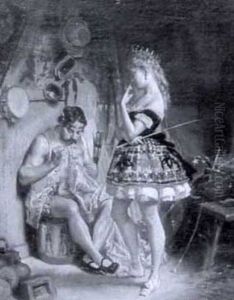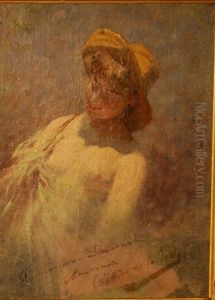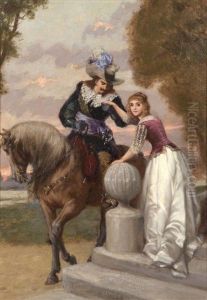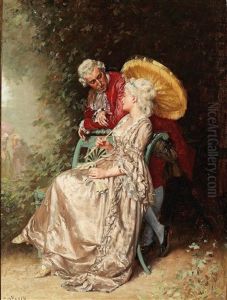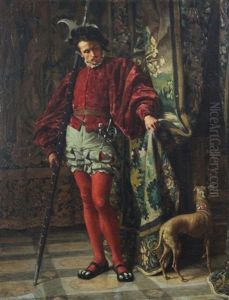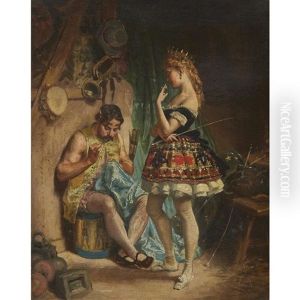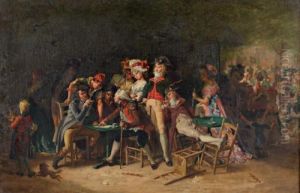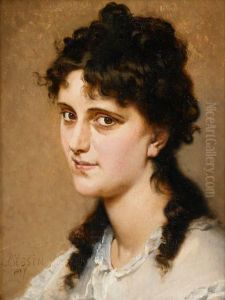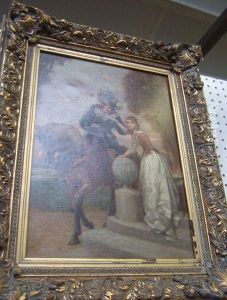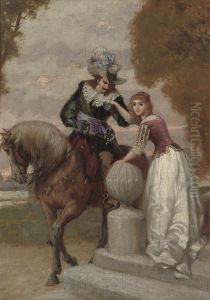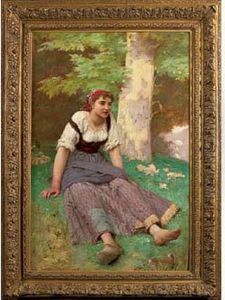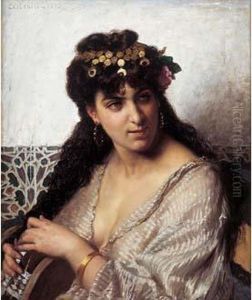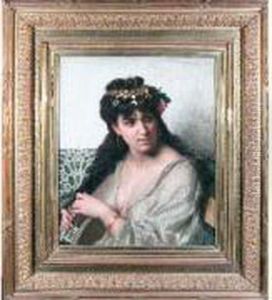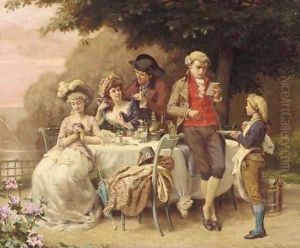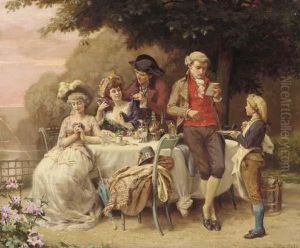Charles Alexandre Coessin de la Fosse Paintings
Charles Alexandre Coëssin de la Fosse, born in 1829 in Cherbourg, France, was a notable French painter associated with the academic and historical painting traditions of the 19th century. His work, deeply rooted in the academic art movement, reflected a dedication to classical techniques and subjects, often drawing inspiration from historical events, mythology, and the Bible.
Coëssin de la Fosse was educated at the École des Beaux-Arts in Paris, where he studied under renowned artists such as François-Édouard Picot and Alexandre Cabanel. These influences are evident in his meticulous technique and the dramatic intensity of his compositions. Throughout his career, Coëssin de la Fosse gained recognition for his ability to imbue his works with emotional depth and narrative complexity, characteristics that resonated with the tastes of the period.
He exhibited at the Paris Salon, a prestigious venue for artists of the time, where he garnered attention and accolades. His paintings were celebrated for their refined execution and imaginative portrayal of scenes from antiquity and the Renaissance. Despite the rise of Impressionism and other avant-garde movements during his lifetime, Coëssin de la Fosse remained committed to the ideals of academic art, emphasizing beauty, technical skill, and historical accuracy.
In addition to his historical and mythological scenes, Coëssin de la Fosse also received commissions for religious art, contributing to the decoration of several churches in France. His work in this domain further exemplifies his skill in handling large-scale compositions and his sensitivity to spiritual themes.
Charles Alexandre Coëssin de la Fosse's legacy, though overshadowed by the more revolutionary artists of his time, reflects the enduring appeal of academic art in the 19th century and its role in the transition towards modern artistic expressions. He passed away in 1910, leaving behind a body of work that continues to be appreciated for its craftsmanship and historical value.

